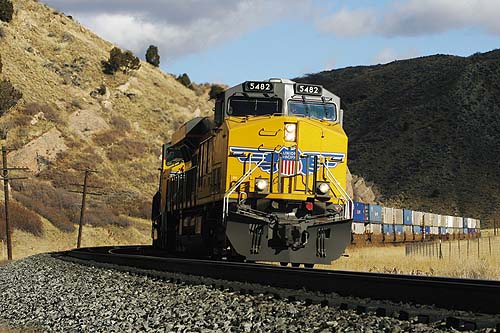 The final acquisition of an important rail segment has given the International Port of Coos Bay a chance at economic stability.
The final acquisition of an important rail segment has given the International Port of Coos Bay a chance at economic stability.
Union Pacific Railroad is donating a 22-mile section of rail line to the Coos Bay port. The track was previously used by Central Oregon & Pacific Railroad. // PHOTO COURTESY OF UNION PACIFIC |
The final acquisition of an important rail segment has given the International Port of Coos Bay a chance at economic stability.
Union Pacific Railroad and the port are nearing a deal for a 22-mile stretch of railroad that runs from the north spit of lower Coos Bay to Coquille. The railroad company will donate the stretch, except for a small profitable portion that Coos Bay will have to buy from UP for an undisclosed price. In March 2009 the port bought a sizable chunk of rail line that runs from west Eugene to the north spit of lower Coos Bay for $16.6 million. The 22-mile stretch will add to this segment, which is isolated from other UP-owned lines and not financially viable to UP, but vital for businesses with direct access.
Companies such as Oregon Resources Corporation, Georgia-Pacific and Roseburg Forest Products depend on rail to ship product. About 300 jobs disappeared in 2007 from companies that used the line when service was discontinued from Eugene to Coquille. American Bridge went from 65 to 19 jobs and doubled its transportation costs. Roseburg Forest Product’s Coquille-based plywood mill employs several hundred people. Without rail service the company would consider moving that production to other mills in Dillard and Riddle because the company spends 10% to 15% more on land transportation in the current location. The port also hopes a strong rail line will lure international investors that depend on rail to ship their products coast to coast.
“Mills are in danger without the railroad,” says Bob Ragon, spokesman for Coos Siskiyou Shippers Coalition.
Every added rail car represents revenue for Coos Bay, which gets a percentage of the original shipping rate. The port initially will add tariffs to cover operation costs.
“When you are in the manufacturing business you need competitive transportation options,” says Martin Callery, the port’s director of communications and freight mobility.

